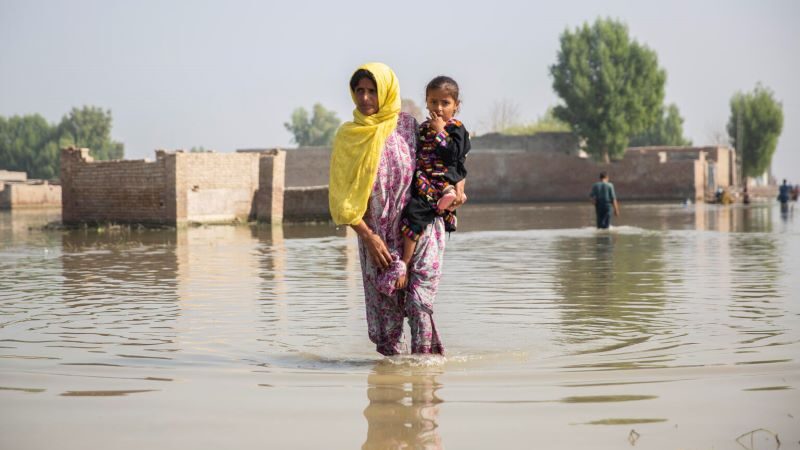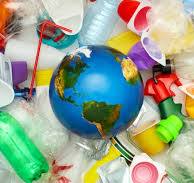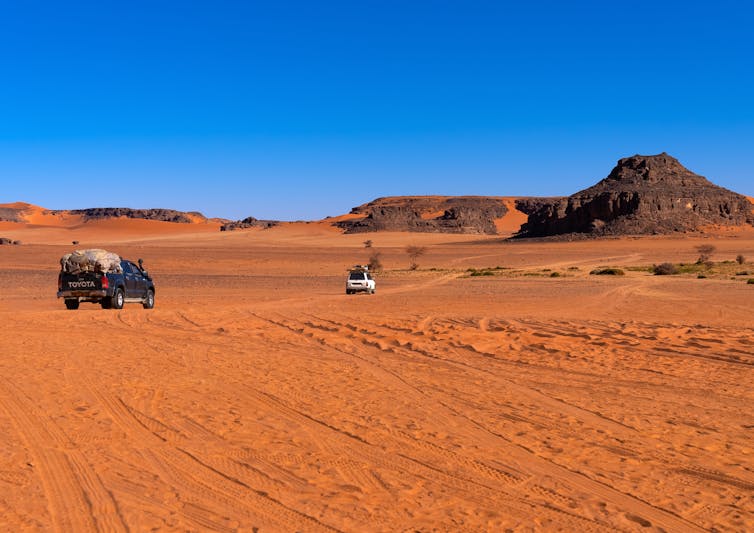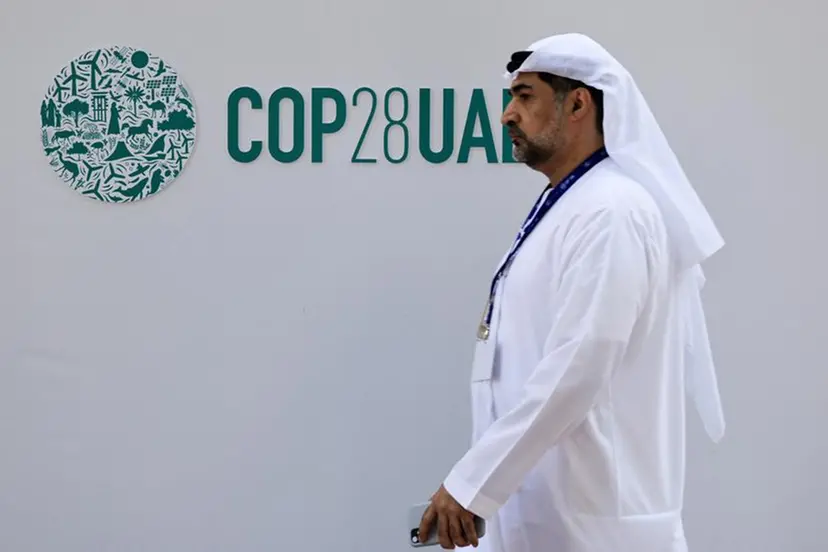The Sharm el-Sheikh Implementation Plan was gavelled through at dawn on Sunday 20 November 2022, after a two-week climate summit went into overtime. The Sharm el-Sheikh Implementation Plan made a breakthrough on support for climate victims, but avoided confronting the oil and gas sector
Procedurally, no big decisions were due to land at Cop27. But the convergence of multiple crises in 2022 – Russia’s war, global inflation, Covid’s long tail and of course climate disasters – raised the stakes of every increment. The biggest breakthrough came on support for climate victims. Developing countries got the loss and damage fund they fought for – on the proviso that the burden of paying into it does not all fall on rich governments. Who pays and who benefits is a battle for Cop28. There was little to stop polluters causing more damage, though. A proposal to phase out all fossil fuels, not just the coal power targeted at last year’s summit, went nowhere. The Egyptian presidency openly struck gas deals on the sidelines. Here’s where the key issues landed.
Fossil fuels
At last year’s Cop26 in Glasgow, the presidency made a push to “keep 1.5 alive”, referring to the most ambitious temperature limit in the Paris Agreement. And it named coal as a problem for the first time, with countries agreeing to phase down its use.
In Sharm el-Sheikh, coal-reliant India sought to turn the heat onto other fossil fuels. This was seized on by a broad coalition of more than 80 developed and vulnerable countries – but not by the Egyptian presidency. Egypt never included fossil fuel phaseout language in the draft text. Indeed, it promoted fossil gas and struck deals on the sidelines. Behind closed doors, countries including Saudi Arabia and Russia made the argument that oil doesn’t cause climate change, emissions do.
The text does promote renewables but also “low-emission” energy. This could be interpreted as gas, a fossil fuel which is less polluting when burned than coal, or fossil fuels with carbon capture and storage. It holds the Glasgow Pact line on 1.5C and coal, but doesn’t go beyond it. There is recognition that the 1.5C target “requires rapid, deep and sustained reductions in global greenhouse gas emissions reducing global net greenhouse gas emissions by 43% by 2030 relative to the 2019 level”.
Loss and damage finance
Three decades ago, small island states and poorer countries started calling for compensation for the damage climate change inflicts on their communities. While “compensation” became taboo, they finally got finance for “loss and damage” on the formal agenda at Cop27. Wealthy nations, reluctant to put their hands in their pockets, offered up a “mosaic of solutions” like insurance and early warning systems. Developing countries were determined to get a dedicated new fund.
The EU blinked first. They announced they would support a fund if the donor base was broadened, if it was targeted at the most vulnerable developing countries and if Cop27 also agreed strong action to reduce emissions. These conditions were partly met and developing nations accepted the offer. The US and other rich countries got on board and they all agreed “to establish a fund for responding to loss and damage”.
A transitional committee will look into what funding is needed and where the money should come from. It will tackle the thorny issues of whether to expand the donor base to countries like China or Qatar and report to Cop28. Some of the money is to come through “existing funding arrangements”, like development banks or debt relief. Some from “innovative sources”, which could mean taxes on fossil fuels, aviation or shipping.
The EU specified that support should only go to “vulnerable” countries – a term for the transitional committee to define. UN Climate Change has been tasked with holding two workshops on the issue before Cop28 and reporting back. Countries agreed on how to set up an organisation called the Santiago Network which will provide technical assistance in averting, minimising and addressing loss and damage.

Aneefa Bibi holds her 5-year-old daughter, Hood, who is experiencing fever and chest pains, in Sindh, Pakistan, November 2022 (Pic: © UNICEF/UN0730453/Bashir)
Mitigation work programme
At Cop26 in Glasgow, countries noted that emissions were projected to be 14% above 2010 levels in 2030. To limit global warming to 1.5C, emissions need to fall 45%. To fix that, they agreed to set up a “work programme to urgently scale up mitigation ambition and implementation in this critical decade”.
In Sharm el-Sheikh, nations debated how to structure this work programme. Developed and vulnerable countries wanted the talks to be long, strong and specific. Emerging economies wanted them to be short, weak and broad. The latter’s fingerprints are on text saying the process should be “non-prescriptive, non-punitive, facilitative, respectful of national sovereignty and national circumstances” and “not result in new targets or goals”. They former group wanted talks to continue until 2030, the latter until only 2023 or 2024. They compromised on 2026.
The Bridgetown agenda
A serious conversation about shifting trillions of dollars into green and climate-resilient investments has been gathering traction over the past year. Barbados’ Mia Mottley set the ball rolling in Glasgow. Since then, her “Bridgetown agenda“ has gathered momentum. The proposed reforms to the international financial system are happening outside UN Climate Change. But unlocking much-needed climate finance is relevant to the process. The International Energy Agency estimates that $4 trillion need to be invested in renewable energy every year by 2030 to reach net zero emissions by 2050. Developing countries alone need an estimated $5.6 trillion to meet their 2030 goals. Increasing debt levels is making matters worse. Countries agreed that delivering such funding will require “a transformation of the financial system and its structures”.
They called on multilateral development banks (MDBs) and international financial institutions to scale up and simplify access to climate finance and ensure their activities contribute to “significantly increasing climate ambition”. This echoes recommendations made by a G20 expert group on the issue.
However, Mottley’s flagship proposal to use IMF relief, known as special drawing rights (SDRs), to fund carbon-cutting projects doesn’t feature in the text. Discussions will continue at the spring meetings of the IMF and the World Bank.
Carbon trading rules
Negotiators outlined the broad framework for a new global carbon trading scheme in Glasgow. In Sharm el-Sheikh, they filled in some details. The text creates a two-tier carbon market, applying different rules depending on who buys the credits and for what purpose. The Glasgow Pact banned double counting: if one country buys an emission credit from another to use towards its target, the host country needs to make an accounting adjustment. This also applies to international compliance markets such as aviation’s trading scheme Corsia.
In the new second-tier market, carbon credits are called “mitigation contributions”. A company can buy a credit from another country and the host does not need to tweak its emissions inventory. While the name suggests the buyer should not use these credits to offset their own emissions, there is nothing to stop them. Campaigners warn this opens the door to double claiming and corporate greenwashing of net zero pledges.
A technical body made recommendations on how to define “removals” – sucking carbon dioxide out of the air – for trading purposes. Many of the options involve untested or controversial processes and negotiators sent the recommendations back for further work. Regarding bilateral carbon trades between countries, the text allows governments to designate any information about the exchange as confidential. Experts have raised concerns this could allow shady deals to go unchecked and make accountability toothless.
Just energy transition
The energy crisis has been the stark background for Cop27. A number of countries have ramped up their coal, oil and gas production to deal with the short-term supply crunch. In Sharm el-Sheikh, countries “recognised” that the crisis underlines the need to “rapidly transform energy systems,” including by accelerating renewable energy roll out.
Deals between rich and emerging economies to accelerate the shift away from coal, known as just energy transition partnerships, got a special mention as a way to speed up emission cuts. Two days before the start of the summit, South Africa published details of a $84bn investment plan to transition from coal clean energy. It outlined long-awaited details of a $8.5bn deal with wealthy countries
On the sidelines of the G20 leaders’ summit in Bali, rich countries announced a similar $20bn deal with Indonesia. The funds include both public and private finance contributions. Vietnam is next in line, with an agreement mooted before the end of the year. At Cop27, countries agreed that “just and equitable energy transition” must be based on national development priorities and include social protection and solidarity measures, such as providing retraining programmes and support for coal workers affected by the transition. Cop27 decided to establish a work programme on “just transition” and convene an annual ministerial roundtable as part of this process.
Adaptation
A year ago, Egypt billed Cop27 as a “resilience” Cop. That buzzword was later dropped for “implementation”. Adapting to the impacts of a changing climate never stopped being important to those on the front lines. But measuring progress on adaptation is harder than counting tonnes of carbon. Work to define the Global Goal on Adaptation inched forward. Countries agreed to develop a framework to guide delivery of the goal and track progress. This will take into account countries’ vulnerability and capacity to cope, consider a range of themes include water, food and agriculture and poverty, and science-based indicators, metrics and targets.
A proposal to commission a special report on adaptation from the Intergovernmental Panel on Climate Change went nowhere. Frustrated negotiators from both developed and developing countries told Climate Home the African Group of Negotiators (AGN) hogged the mic with unproductive interventions.
Mariam Allam, lead AGN negotiator on the issue, rebutted the accusation. On the contrary, she said the AGN’s “willingness” to engage with the substance “was unmatched” by other groups. Richard Klein, an adaptation expert at the Stockholm Environment Institute, told Climate Home: “There was an opportunity to show what ambitious and transformative adaptation could look like. But it didn’t happen.”
It doesn’t help that this agenda is poorly funded. Countries “noted with serious concern” the gap between current levels of adaptation finance and what is needed to responded to climate impacts. They “urged” countries to “urgently and significantly scale up their provision of climate finance”. The only mention of a pledge by rich countries to double adaptation funding to $40bn by 2025 was about preparing a report.
Climate finance
Rich countries are late to deliver the $100 billion they promised by 2020 to help developing countries cut emissions and cope with climate impacts. The definition of madness is doing the same thing over and over again and expecting different results. So perhaps it shouldn’t surprise that talks on a new collective climate finance goal for 2025 got off to a slow start. A decision is not due until 2024 and the Cop27 text is mostly procedural. One developing country negotiator likened the process to growing grapes. Harvesting fruits too early doesn’t make good wine, he said. The text agreed in Sharm says the new goal will “take into account the needs and priorities of developing countries”.
It is not just about quantity but quality. Contributors prefer to lend money for carbon-cutting projects, “mobilising” private finance where possible. Recipients want public grants, particularly for unprofitable, but essential, adaptation projects. Much of the debate will centre on sub-targets and accounting standards. Developed countries are pushing to expand the donor base when it comes to loss and damage funding. It’s only a matter of time before that flares up in the broader finance talks.
Africa’s ‘special needs and circumstances’
African nations had hoped that the “Africa Cop” would recognise its special needs and circumstances to tackle climate action. The status unlocks priority access to international support and is enjoyed by the least developed countries (LDC), which includes 33 African nations, and small island developing states (SIDS). But a proposal by the African Group of Negotiators was once again rejected.
A group of Latin American and Caribbean nations (Ailac) has repeatedly argued that expanding the special needs status to all African countries should allow them to claim it too. Chile, on behalf of a group of Latin American and Caribbean nations (Ailac), proposed to open a space for different groups and regions to discuss their needs. There was no consensus on the proposal.
Courtesy: Climate Change News





















